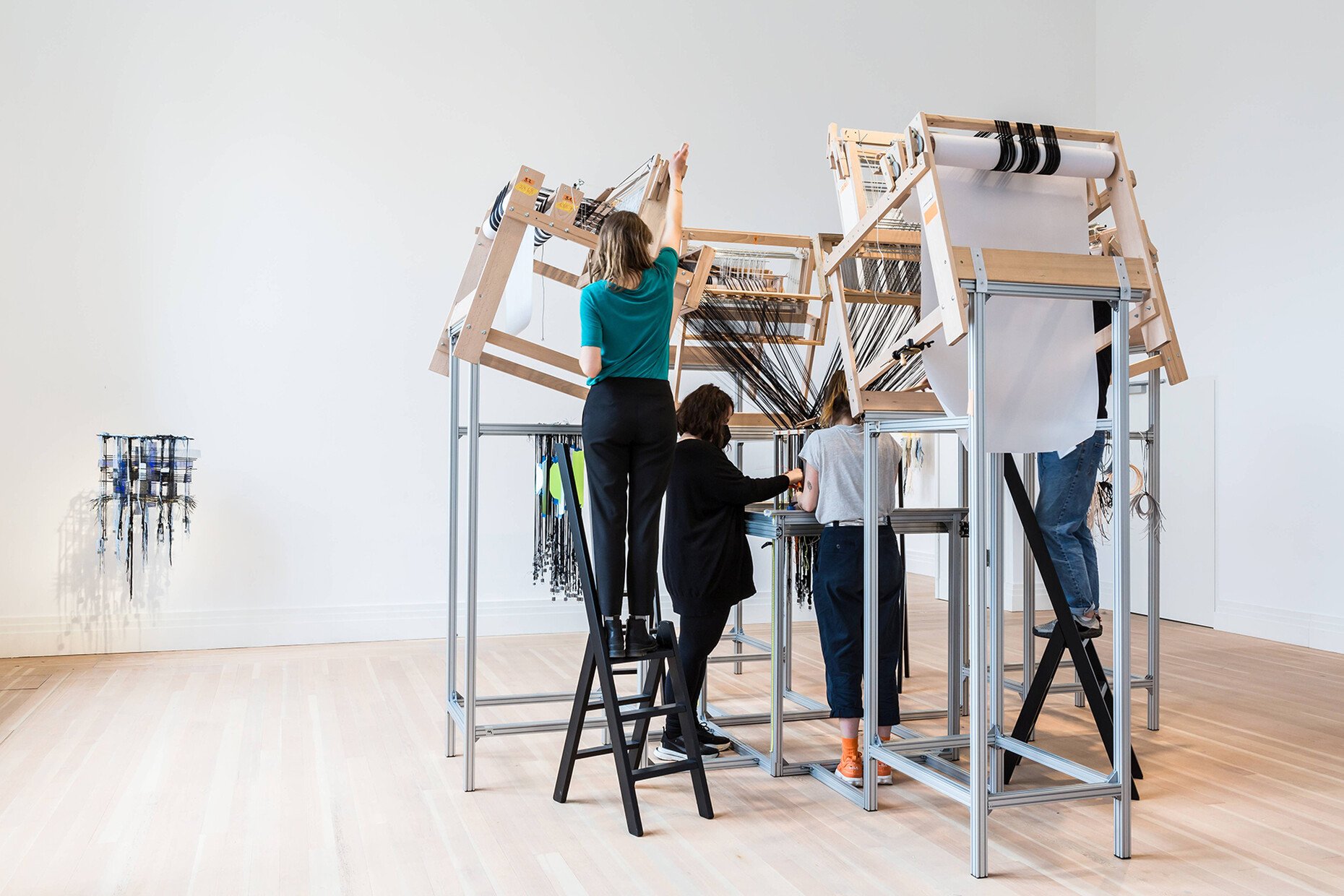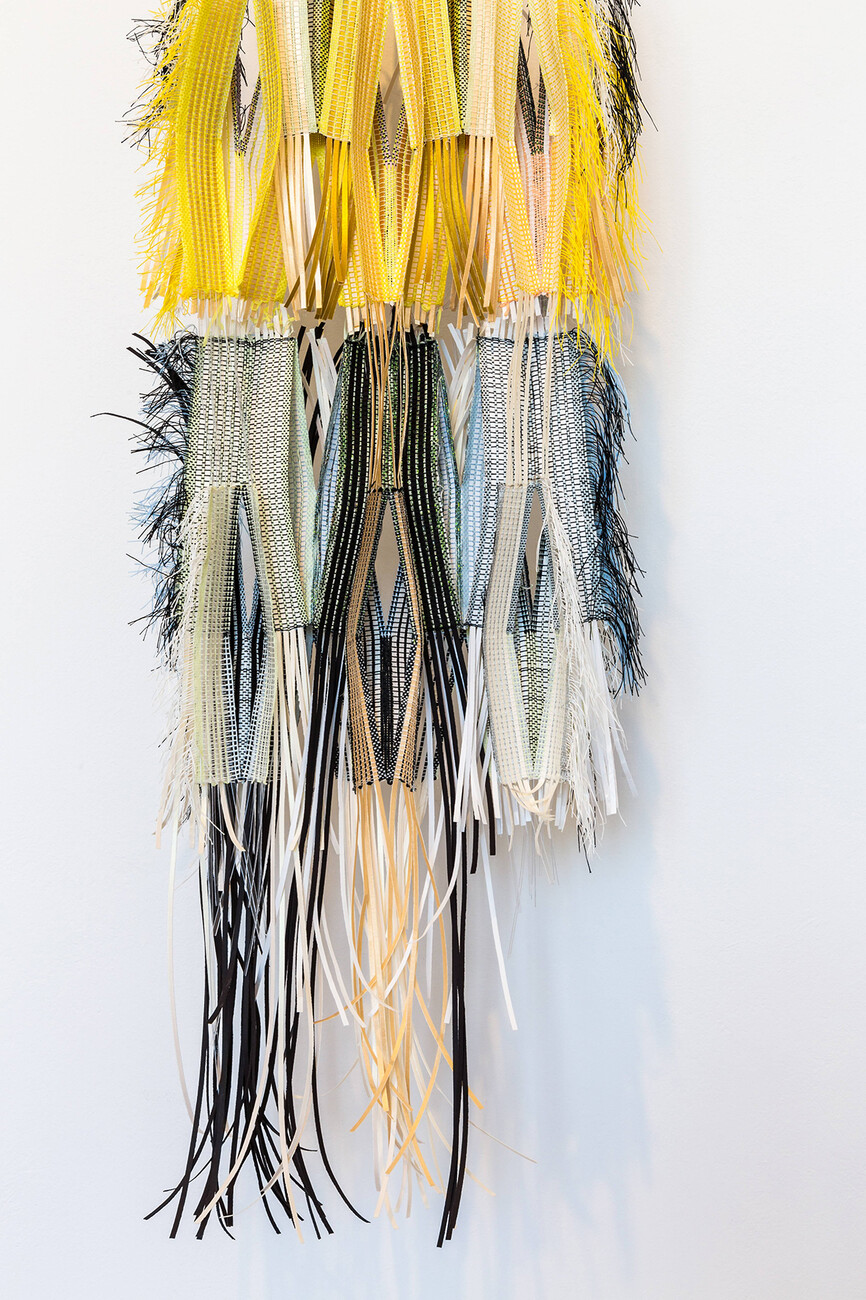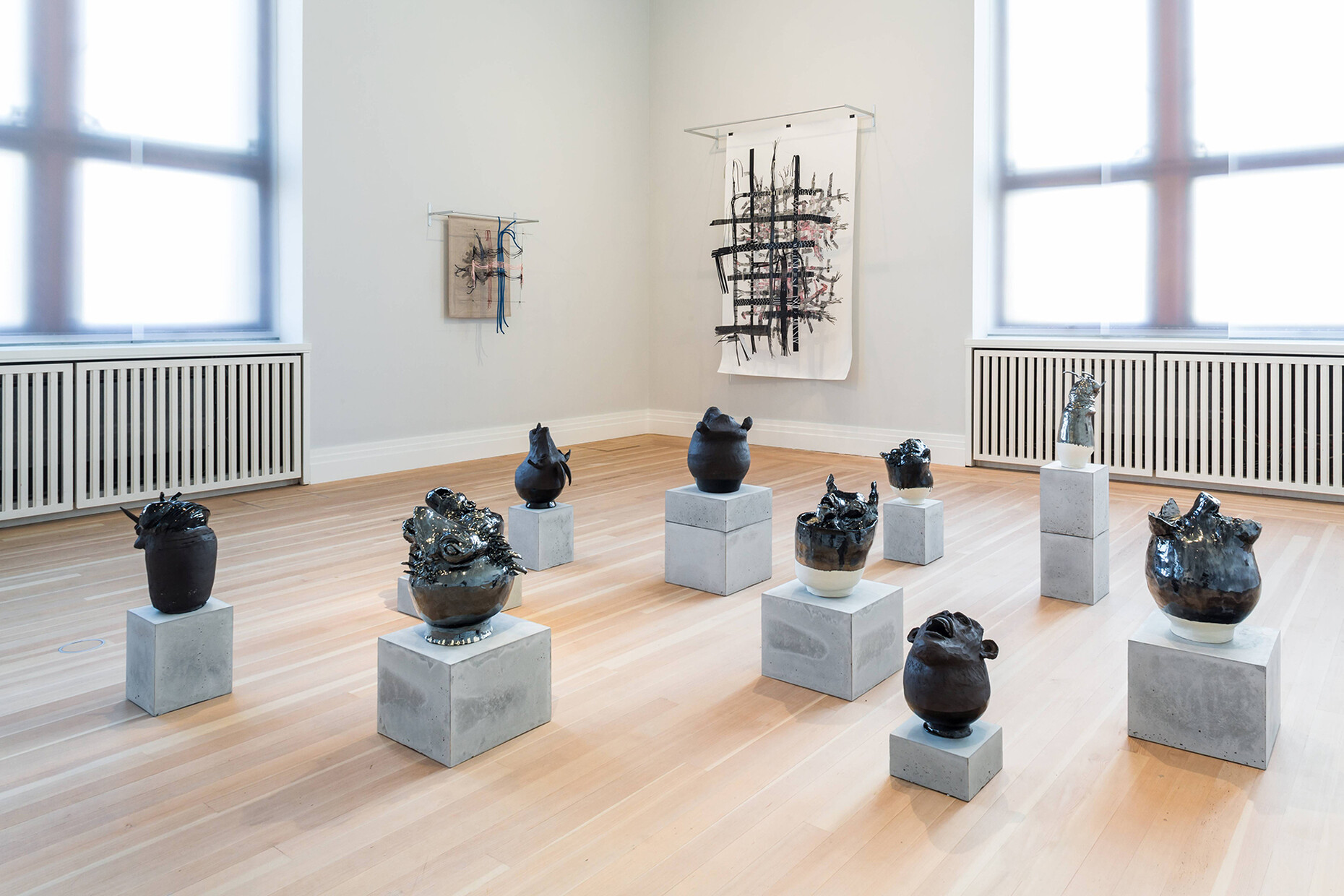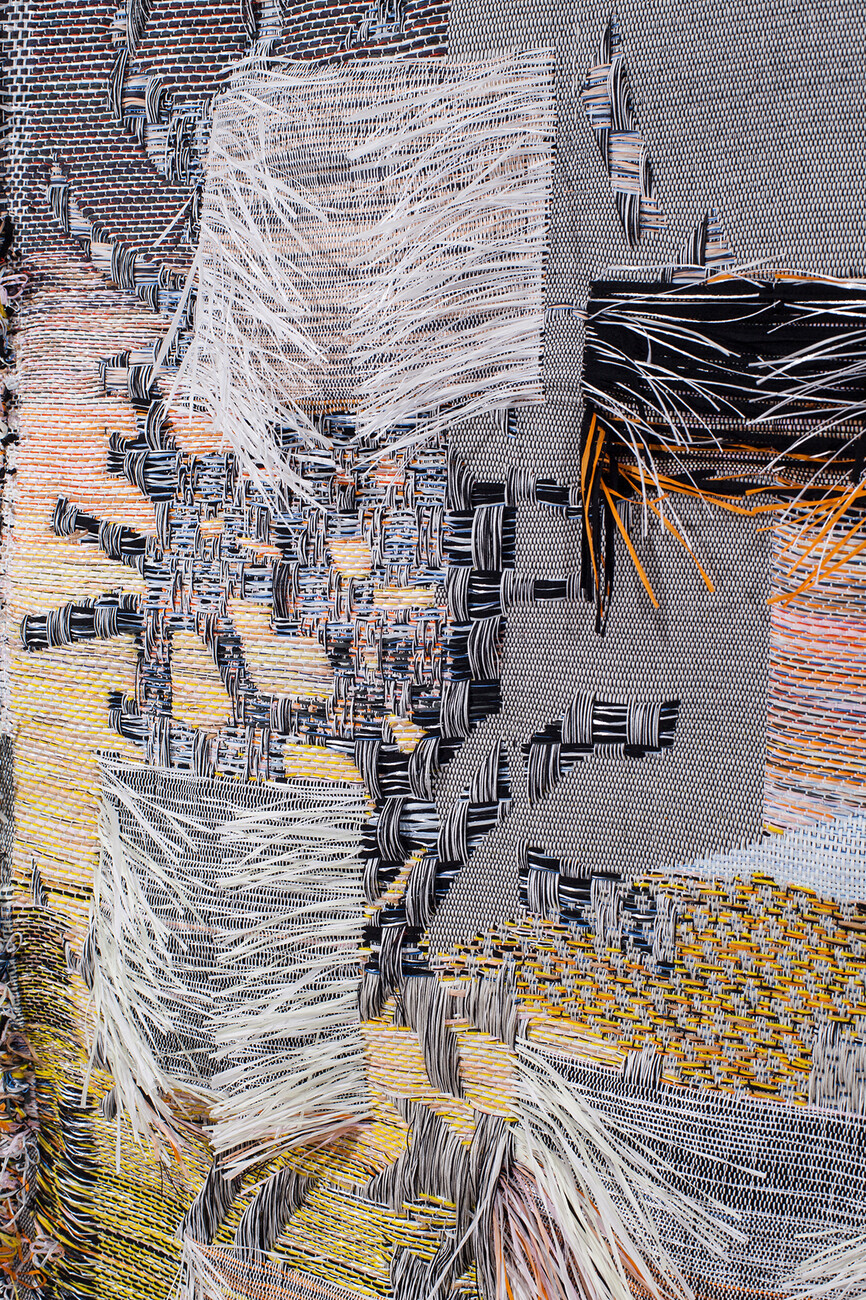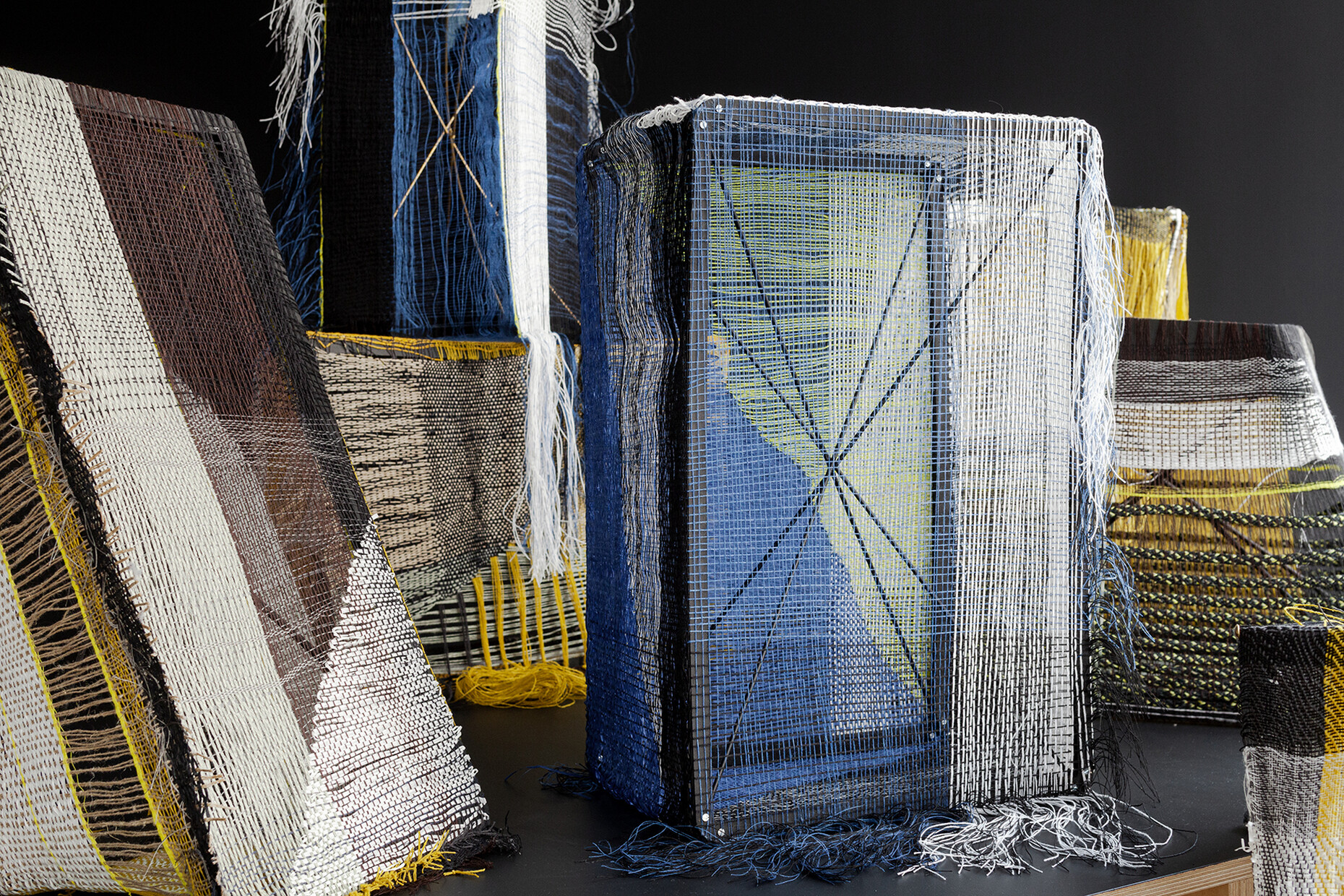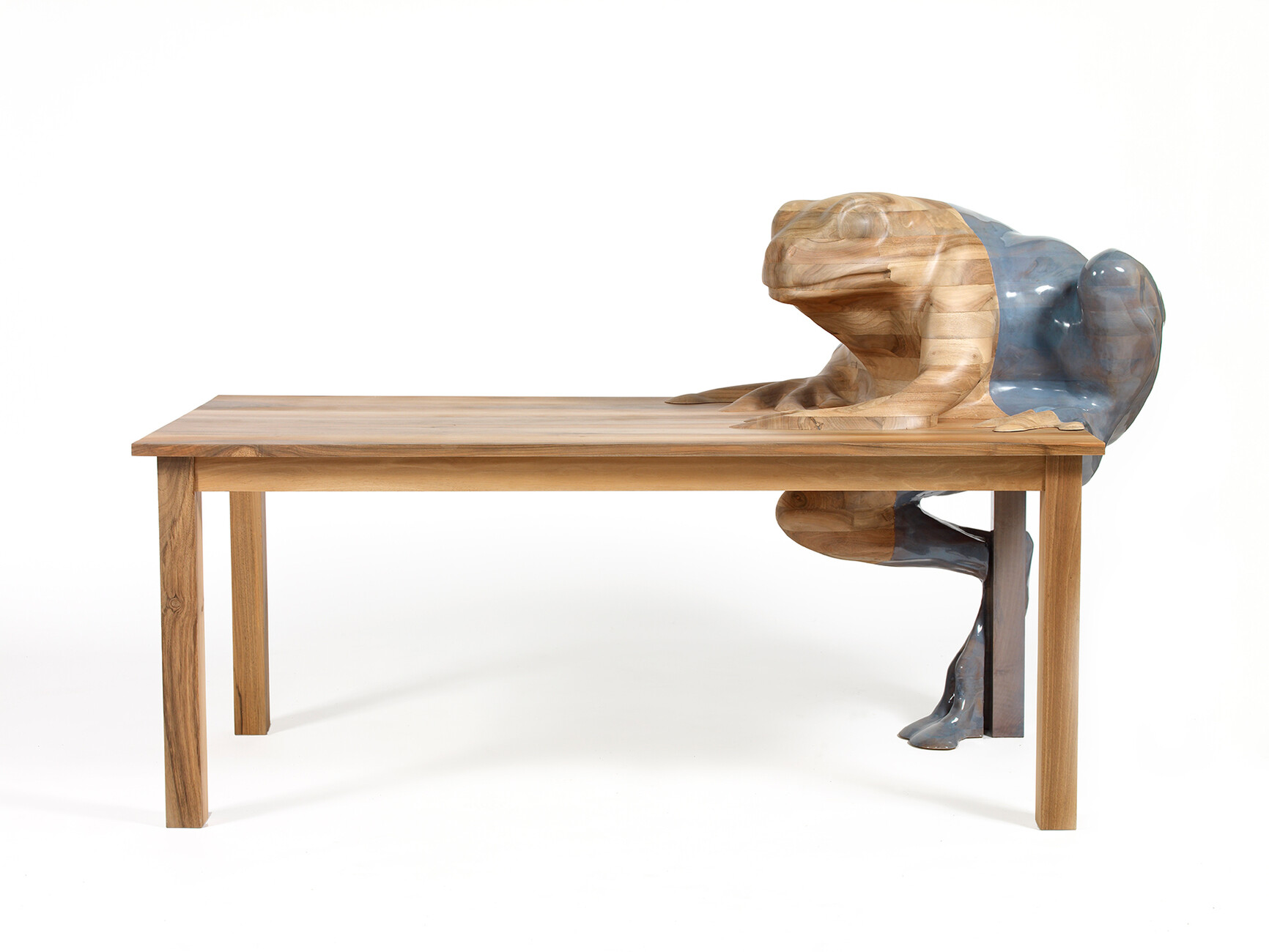Man and the Machine
Hella Jongerius has changed sides. The Dutch designer who has been working for renowned clients from the world of design since the 1990s – customers ranging from Vitra to IKEA – is now taking on projects for clients mainly from the cultural sector. In line with this, currently the Berlin-based art venue that is the Gropius Bau is mounting "Hella Jongerius: Kosmos weben (Woven Cosmos)", a solo show, in parallel with a major Yayoi Kusama retrospective. Back in fall last year, Jongerius accepted an invitation from the Gropius Bau and is occupying, with a team of designers, two large rooms on the building’s upper story, which she has transformed into a temporary extension to her Berlin studio. A place where they have been able to experiment and conduct research freely, where they have worked on the exhibits for the show every day. In these rooms she and her team have constructed looms for three-dimensional weaving and tested how to spin new threads from waste material. The focus of her research was how to make textile manufacturer more sustainable and innovative. However, even though Jongerius has changed sides, this 57-year-old designer has certainly not turned her back on industry. “For many years, I attempted to change industry from within,” explains Jongerius on one of her visits to her studio in the Gropius Bau. “However, the changes were too superficial for me. I now prefer to start by conducting my research from the outside, on cultural platforms such as museums.” She nevertheless hopes that her results will be used in industry. “But we are not that far down that road yet,” she adds, laughing.
And although the temporary studio will be closed when the show opens, the objects and machines have moved down two floors to the exhibition rooms. Jongerius’ team will still be present daily at the Gropius Bau during the show. After all, the focus of “Kosmos weben” will be on large weaving and spinning installations where the designers will be working every day. For example, at a 3-D loom, the seamless loom, which they have assembled from four individual looms. And four people are simultaneously required to operate the multiaxial machine. “It looks like a performance,” comments Jongerius, “But it is work.” Complex textiles are produced in this way, some of them resembling a three-dimensional carpet hovering in the room. Incidentally, visitors are allowed to participate. One room further on there is an interactive installation suspended from the ceiling, bringing man and the machine together to produce a thick rope. The rope, knotted into a rope ladder, will slowly grow out of the window during the exhibition – a small gesture of greeting to the city, telling it that something is happening here, behind the thick brickwork walls of this Neo-Renaissance edifice.
However, as carefully as Jongerius coordinates the materials and colors used for her objects, as aesthetically pleasing and decorative as her textiles appear, for this designer the experiments are not an end in themselves, nor art for art’s sake. “Today, industrial looms are closed, highly efficient systems,” she explains. “It’s not possible to intervene, to simply change something.” Which is why she and her team “hack” looms so as to weave creativity once again, to be able to come up with something new. She sees great potential for innovative technologies. “Weaving is the easiest and, at the same time, the strongest form of construction in existence.” She adds that three-dimensionally woven parts are already being used in the aviation and vehicle construction industries. One of her visions: Building façades completely woven in one piece, with integrated supporting structures and insulation. On one digital jacquard loom she has had three-dimensional test pieces produced with integrated solar cells – prototypes of the kind of kinetic elements that unfurl automatically when exposed to sunlight like the pages in a pop-up book and can harvest energy. However, with their complex shapes and exciting color contrasts many of the objects in the show works equally well without having to be designated for a specific use, as free-form sculptures – particularly in the context of an exhibition venue for contemporary art.
Incidentally, Jongerius has sent out a little message on the subject of sustainability to the Gropius Bau itself – at her exhibition she is showing, amongst other things, in addition to her textile works, a series of amorphous glass objects. She has had these specially blown for “Woven Cosmos” at a Swedish glass works – from the sand, large quantities of which had been left over as waste from the preceding exhibition.
Hella Jongerius: Kosmos weben (Woven Cosmos)
April 29 through August 15, 2021
Gropius-Bau
Niederkirchnerstr. 7
10963 Berlin
Germany






